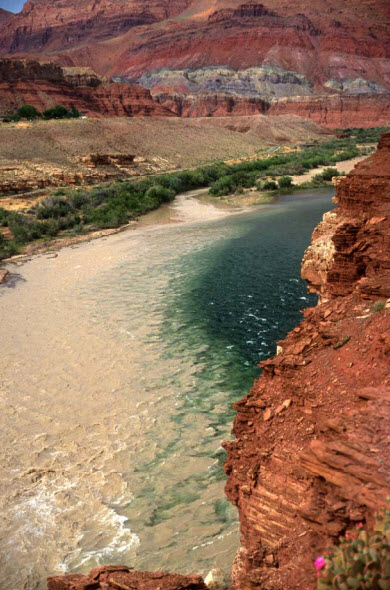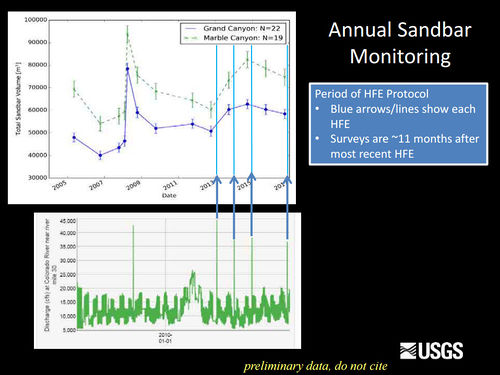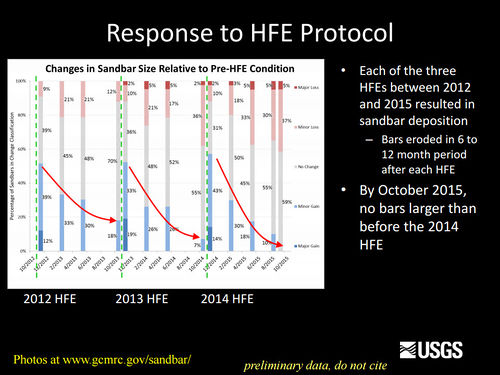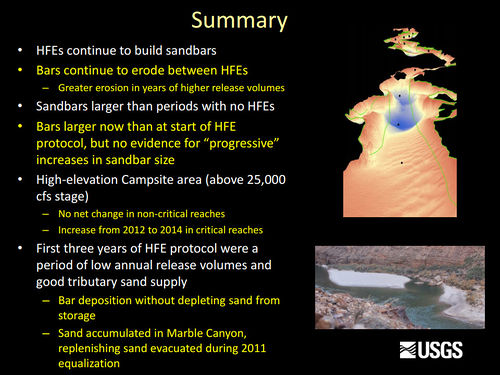Difference between revisions of "GCDAMP Sediment"
Cellsworth (Talk | contribs) |
Cellsworth (Talk | contribs) |
||
| Line 160: | Line 160: | ||
'''2020''' | '''2020''' | ||
| + | *[https://www.usbr.gov/uc/progact/amp/twg/2020-01-13-twg-meeting/20200113-AnnualReportingMeeting-ProjectBEffectsDamReleaseSedimentStorageSandbarDynamics-Presentation-508-UCRO.pdf Project B: Effects of dam releases on in-channel sediment storage and sandbar dynamics ] | ||
*[https://doi.org/10.1029/2019WR025883 Ashley et al., 2020, Estimating bedload from suspended load and water discharge in sand bed rivers: Water Resources Research.] | *[https://doi.org/10.1029/2019WR025883 Ashley et al., 2020, Estimating bedload from suspended load and water discharge in sand bed rivers: Water Resources Research.] | ||
*[https://www.usbr.gov/uc/progact/amp/twg/2020-01-13-twg-meeting/20200113-AnnualReportingMeeting-GeomorphicChangeBiogeomorphicFeedbacksLittleColoradoRiver-Presentation-508-UCRO.pdf Geomorphic Change and Biogeomorphic Feedbacks in the Little Colorado River, Arizona ] | *[https://www.usbr.gov/uc/progact/amp/twg/2020-01-13-twg-meeting/20200113-AnnualReportingMeeting-GeomorphicChangeBiogeomorphicFeedbacksLittleColoradoRiver-Presentation-508-UCRO.pdf Geomorphic Change and Biogeomorphic Feedbacks in the Little Colorado River, Arizona ] | ||
Revision as of 18:36, 26 February 2020
|
|
Sediment and GeomorphologyErosion of sandbars (beaches) along the Colorado River in Grand Canyon was first reported in the early 1970s, approximately 10 years after completion of Glen Canyon Dam. Since then, scientific studies have been conducted to monitor changes in sandbars and changes in the amount of sand stored on the bed of the river. One of the outcomes of these studies has been the implementation of flow experiments intended to rebuild eroded sandbars, especially by the release of controlled floods, also called High Flow Experiments, or HFEs, from Glen Canyon Dam. The sediment and geomorphology projects at Grand Canyon Monitoring and Research Center include the collection and processing of data to provide information needed to conduct controlled floods and to evaluate the outcome of each controlled flood and the long-term effects of controlled floods and normal dam operations on sediment-related resources. [1] Beginning in 1998, recreational campsite area has also been measured on a subset of the sandbar monitoring sites. Campsite areas are defined as areas that are flat (less than 8 degree slope), smooth (not rocky), and clear of dense vegetation. Monitoring data show that vegetation expansion and sandbar erosion/deposition contribute to reductions in campsite area. LTEMP Resource Goal for SedimentIncrease and retain fine sediment volume, area, and distribution in the Glen, Marble, and Grand Canyon reaches above the elevation of the average base flow for ecological, cultural, and recreational purposes. Desired Future Condition for Sediment-Related ResourcesHigh elevation open riparian sediment deposits along the Colorado River in sufficient volume, area, and distribution so as to provide habitat to sustain native biota and desired ecosystem processes |
| --- |
--- |
--- |
|---|



